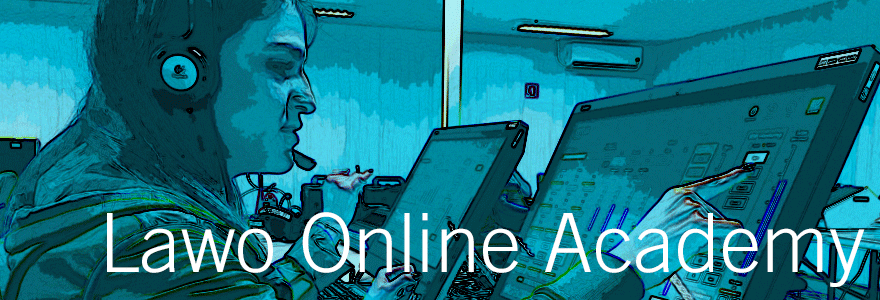Tech Focus: Broadcast Audio Training, Part 1 — Some Pandemic Changes May Be Permanent
A hybrid of remote and in-person learning is likely as the industry tiptoes toward normalcy
Story Highlights
COVID changed everything, including how we learn and teach. Schools from K-12 through graduate courses and technical institutions migrated rapidly — with various degrees of success — to online models.
Pro audio was no exception to the trend. Manufacturers, many of which already had significant online training sites, embraced the concept. Their efforts served both to deepen understanding of key technologies when broadcast and other audio systems are migrating to IP and to enhance brand engagement when the pro-audio sector is experiencing its own business consolidation.
As the pandemic has moved toward a more endemic and manageable proposition, though, approaches to how training takes place continue to change.
Calrec Marketing Manager Kevin Emmott notes that the pandemic’s flood of free time opportunized training for audio engineers, and he wonders whether the alternative production modalities that came with it have been normalized. “I think training became more of a priority for a lot of people during the COVID lockdowns, in part due to having more time to devote to it.”
Calrec’s Sound Institute is a series of free, online training courses covering Brio and Type R consoles. “We still have good feedback from our certified courses,” Emmott says. “We have around 2,000 students who have signed up for more than 4,500 courses, and more than 3,000 courses completed, and we are getting steady growth on those numbers.
“But,” he continues, “I also think that sports broadcasters have moved on from COVID-compelled at-home broadcast-sports production. A lot of Calrec customers are looking at different ways to broadcast live sports safely, whether that’s at home, on a GUI, from a remote-operations center, or something else. These are established workflows now, and there are no longer any barriers to geography. The desire for training is independent of COVID or working from home. The whole industry has moved on from that.”
To Replenish Dwindling Ranks
One of the broadcast audio’s existential concerns is to maintain personnel levels. A1s, particularly, have been retiring in increasing numbers since the onset of the pandemic, part of the so-called Great Resignation. Manufacturers’ online and in-person training offerings are aimed at staffers already in the industry.
 Lawo’s Lawo Academy and its online counterpart, for example, offer technical training courses addressing the company’s IP-based audio, video, control, and infrastructure solutions. Remote training accelerated during the pandemic, with trainers using webcams like document cameras, focused in on console work surfaces to give remote students a close-up look at the desks’ various functions and capabilities.
Lawo’s Lawo Academy and its online counterpart, for example, offer technical training courses addressing the company’s IP-based audio, video, control, and infrastructure solutions. Remote training accelerated during the pandemic, with trainers using webcams like document cameras, focused in on console work surfaces to give remote students a close-up look at the desks’ various functions and capabilities.
More recently, though, the Germany-based company debuted the Lawo Experience, an attractively produced interactive visit to a virtual showroom displaying its various products in audio and other sectors. Created by Lawo’s marketing department, it provides links to more in-depth resources under a “How-To…” rubric: for instance, how to automate audio-follows-video functionality on its mc² series consoles.
“It was created [as] a kind of interactive video FAQ on a wide range of topics, but it’s potentially a huge training and information resource as well,” says Lawo Market Relations Manager Wolfgang Huber, describing it as a bit like infotainment. “It doesn’t go into depth like the Lawo Academy does, but it does give you a very good overview of products and what they can do and what you can do with them. We have one that shows how you can do a mix from your kitchen! It could be attractive to people who are a bit interested in broadcast audio but who have not yet dived into it.”
Expanded Online Content
As COVID levels continue to drop, the return to live, in-person training is highly anticipated. Shure Audio Institute Director Dave Klein notes that COVID quickly and substantially boosted online participation in the company’s webinars. In response, the audio-products manufacturer developed some highly specific program content, with titles like Shure Webinar: Workflow — Inside the NBA “Bubble” and Shure Webinar: Workflow — Broadcast From Home. Frequency increased to as much as a webinar a week, attracting as many as 2,700 participants vs. the several hundred who typically attended pre-pandemic. Those numbers have been receding lately, he says, which he interprets as likely a harbinger of a return to normalcy.

Shure Audio Institute’s Dave Klein sees continuing changes in focus and frequency of online courses.
That’s changing the frequency and focus of the training modules. Klein notes increased emphasis on adding skills for participants already on the lower rungs of the pro-audio career ladder, in anticipation of their moving up to replace older workers leaving the business.
An area of focus is RF coordination. For instance, he suggests, an A2 who’s deploying wireless microphones is a good candidate for moving up into the role of frequency coordination. Configuring its training around that, the Shure Institute has made the prerequisite courses available online, anticipating a return to live, hands-on training for it later this year. In-person training will be rolled out at different times globally, based on local gathering restrictions, but Klein feels confident that it will resume soon enough.
“During COVID,” he says, “those prerequisite courses were very popular, so we’re expecting that the in-person main training will see significant numbers as well. These are skills that broadcast and live events are going to need lots of.”
More Than Just Training
SSL VP, Technical Operations, Thomas Jensen says the pandemic has changed both commissioning of and training on new broadcast consoles, with both tasks becoming largely virtualized. As the industry faces a possible third year of remote work but with restrictions easing here and there, a kind of hybrid approach has settled in.
“What we’ve found is that, in addition to not having to have someone onsite for training, we’re able to make scheduling of that more flexible,” he says. “Instead of having someone there for a specific couple of days or a week and having everyone who needs the training be there at specific times, we can stretch that out. We can have separate sessions for morning and afternoon shifts, for instance.”
Furthermore, he notes, engaging trainees through touchscreens actually seems to improve learning outcomes, with trainers and trainees able to be hands-on on the equipment simultaneously, if virtually.
“If someone is needed onsite,” he says, “it’s not as many days [away for training]. Overall, it’s much more efficient and cost-effective. We can also adjust the amount of virtual and onsite according to how it works best for the customer. Before, there was a somewhat rigid approach to training; now it’s become much more flexible.”
COVID’s impact on broadcast in general has been significant, disrupting and altering workflows, perhaps permanently, perhaps for the better. That can also be said for the way the industry learns to use its tools.
Click here for Tech Focus: Broadcast Audio Training, Part 2 — Manufacturers Offer In-Depth Online Programs.
